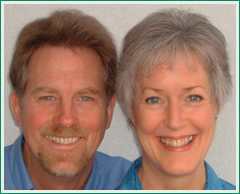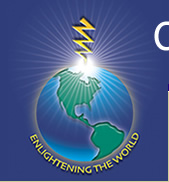
Healing the Relationship Between Heart and Mind
|
 |
|
| Peter and Anne Selby Associates |
Fundamentally, life is about relationships, and deep relationships are experienced in the heart more than anywhere else in the body. The mind is a servant to the heart in relationships. Its penetrating awareness reveals truth and produces mutuality and understanding, like a sharp tool boring down to the “heart of the matter.” The mind serves the heart through its ability to perceive and communicate truth. In astrology, the planetary archetype Mercury is associated with relationship, communication, and mental acuity. It is hard to imagine being able to sustain a positive connection with someone when mutual understanding and clear communication are not present.
When the mind is not clear, distorted perceptions triggered by past traumas can destroy relationships, not heal them. In Hawaiian traditions, the mind and the emotions are likened unto undisciplined 2-year-old children called kekis. Through misperceptions and projections of unconscious unresolved past hurts hidden within the mind, relationships can perpetrate trauma and become “dis-heartening.” When relationships become purely mental, they feel cool, superficial, un-nurturing, and disconnected.
This was exemplified recently in a client who despaired because she had lost any sense of emotional connection to her husband. We observed clairvoyantly that her heart energy was dissociated (broken) and that she had accumulated a considerable build-up of anger. After the anger and trauma were released and her heart energy was reintegrated, she experienced a whole new sense of connection with her spouse and wrote us saying that they had “started again to talk … or I should say we’ve started talking together for the first time in our life.” People with broken hearts often lose the ability to feel love, even when it is abundantly given, creating a haunting, even angry sense of aloneness and disconnection.
When a person is in their heart, there is a softness and vulnerability that invites connection. Open, welcoming body postures and warm, friendly facial expressions reflect this and the voice is more embodied. The heart not only facilitates connection with others, it helps us connect to ourselves and integrate the different aspects of our own awareness—body, mind, soul, and spirit.
Martin Teicher, a brain research scientist at Harvard, has shown that developmental trauma, neglect, and abuse can cause integrative fibers of the brain to degenerate and become impaired in their growth. This can affect the linking together of various aspects of memory within the hippocampus, functions within the corpus callosum linking the left and right cerebral hemispheres, and the role the prefrontal cortex plays in linking the lower and higher centers of the brain. The implications of this are huge when it comes to understanding the effect of trauma in promoting psychopathology.
In general, the effect of trauma on the psyche is to promote rigid and/or chaotic thinking and behaviors. New scientific findings from an emerging discipline called neurobiology have shown that trauma of all kinds can cause the brain to lose functional coherence and neurological interconnectedness where the neuronal structures that would connect and coordinate brain functions actually fail to form or cease functioning.
The heart also functions like a brain and has been shown to have over 40,000 neurons within its structure. The heart has rich neurological connections to the brain as well as interactions with the brain through neurotransmitters called neuropeptides. Here again, trauma has been shown to create neurological disconnections, incoherent electrical patterns within the heart, and disturbed interactions with the brain.
On the positive side, research has also shown that a particular kind of meditation called non-dual meditation can assist the brain to function in an integrated manner. It has been observed that normally certain structures in the brain will be active while other parts of the brain will at the same time be toggled off. If those “off” parts turn on, the reciprocally “on” functions will toggle off. An example might be that, when people sense threat, they devolve into fight-or-flight reptilian brain responses and lose connection to the creative thinking and problem solving of their higher centers.
As an example, I recently became over engaged mentally in an animated conversation with a dear friend. We began to lose connection to each other as each of us became more attached to our own mental agenda. Through my heart awareness, I realized where this was going: namely, a chaotic interaction fraught with bad feelings. Body awareness alarm bells were sounding—blood pressure rising, facial expression tightening, aggressive postures appearing, faces red, breathing rapid and shallow. We were getting ready to have a verbal showdown, but I chose instead to come back into my heart.
I shared what I was feeling, apologized for becoming overly intense, and named the all-too-familiar trap or pattern of becoming too mental and rigid. In the process, my body relaxed, and peace was restored within me. We were both afforded an opportunity to become heart-centered again. We shared a loving hug and a good laugh at how our minds had nearly collided “head on.”
The heart can be a source of love, joy, serenity, honor, respect, courage, and patience. Positive attitudes and thoughts bring out these virtues and heal negative energies of the heart—cold, cruel, mean, embittered, jealous, closed, broken, impatient—and even heal heart disease after a heart “attack.” The “head” supports the heart through its wisdom, humility, compassionate thoughts, and positive attitudes. The body supports the heart through open postures, smooth calm breath, and virtuous actions. The heart’s three toroidal-shaped electromagnetic fields (embedded within each other like Russian dolls) are 5,000 times stronger than the brain’s electromagnetic signature and envelop the entire body when the heart is open.
The heart is said to be the “seat of the soul” because the soul comes there to be met and nourished. The heart is also said to be the “palace of the spirit” because we can express our love and passion for life from there. Research published by the Institute of HeartMath has shown that, neurologically speaking, the heart may or may not respond to the brain’s directions; however, the brain invariably submits to what the heart directs. So, physiologically speaking, the heart apparently knows best and our brains naturally defer to the heart. If we do the math, what works in our bodies is probably true for life in general: the head is made to serve the heart, not the other way around.
VISIT PETER AND ANNE SELBY'S WEBSITE
![]()
Center for Empowered Leadership ®
Email: info@cfel.org
Phone: 1.609.259.7911
